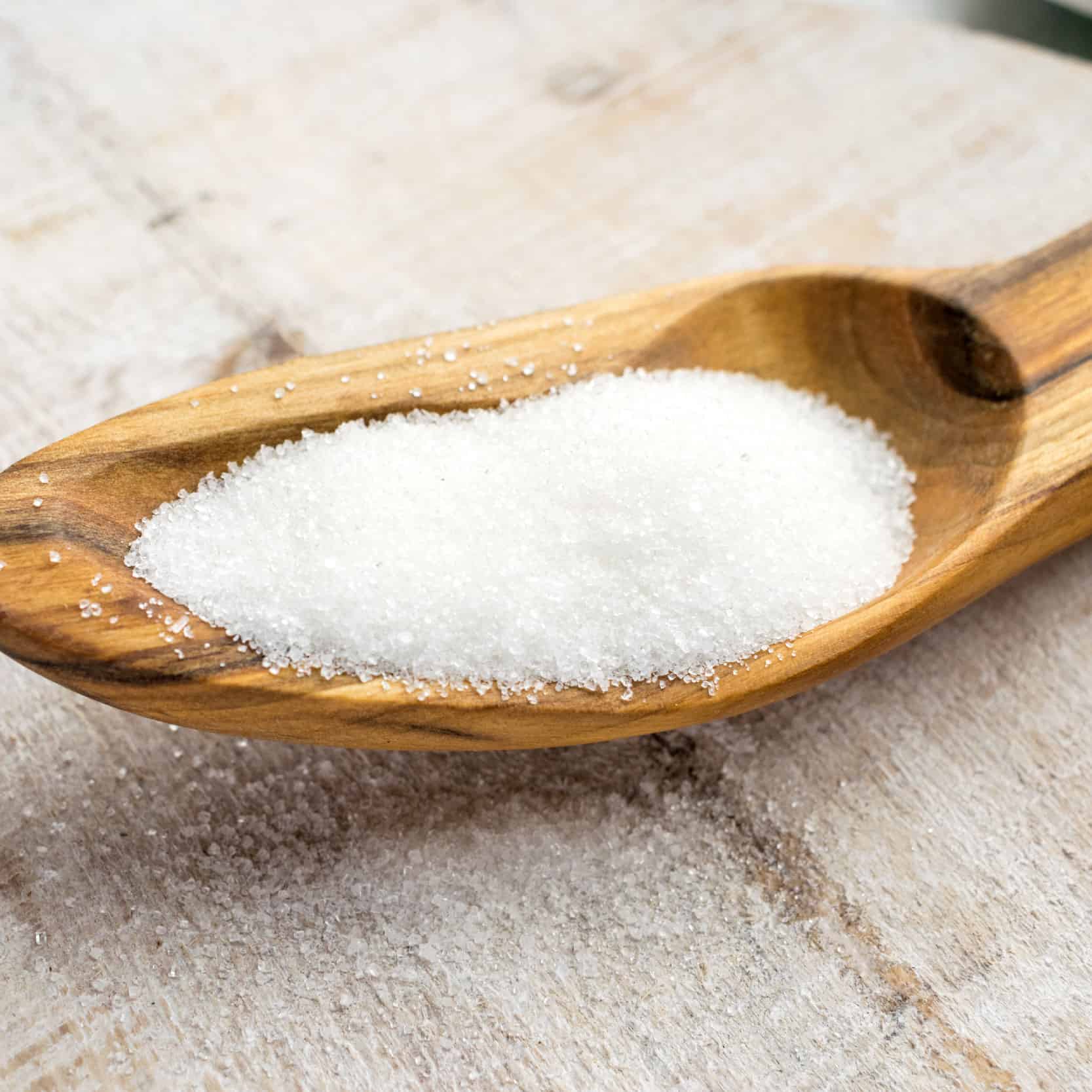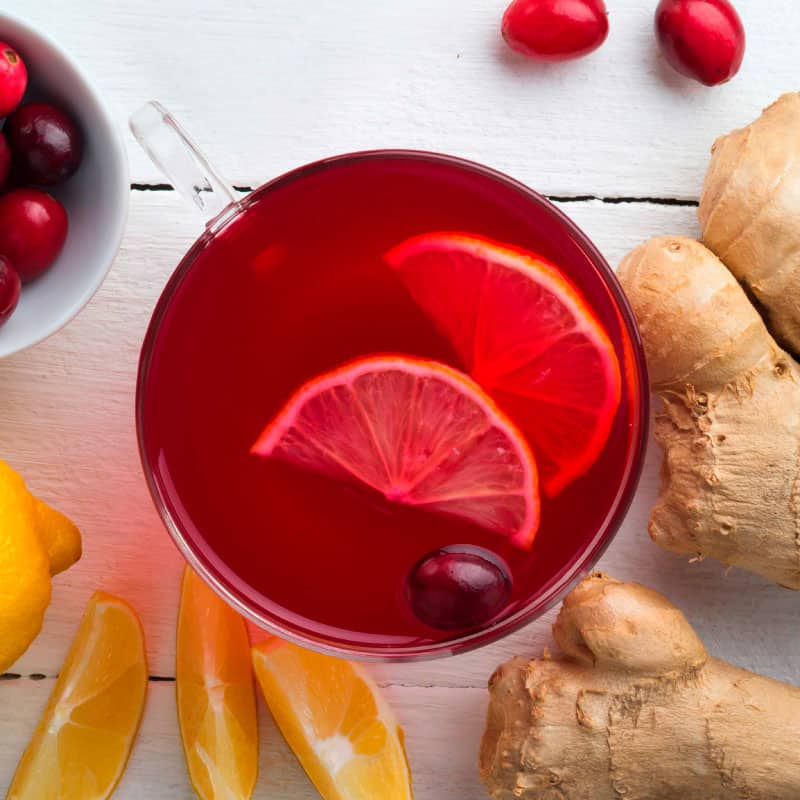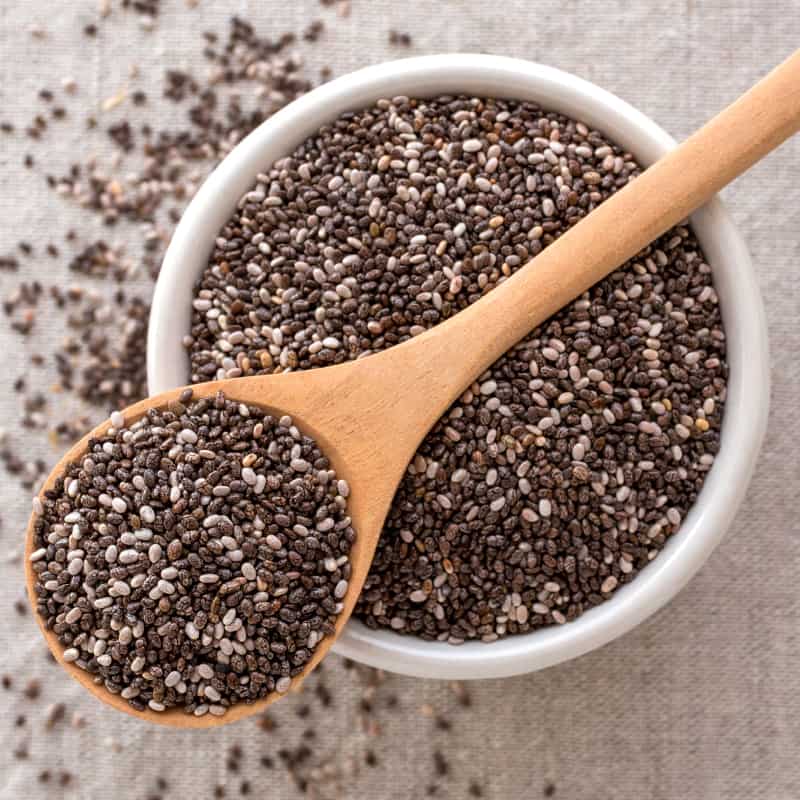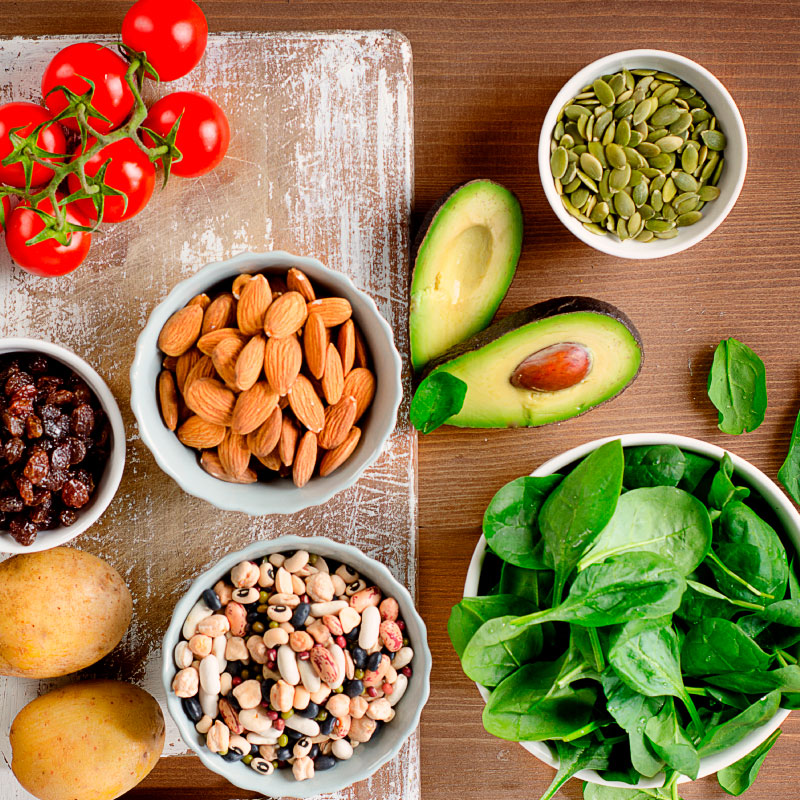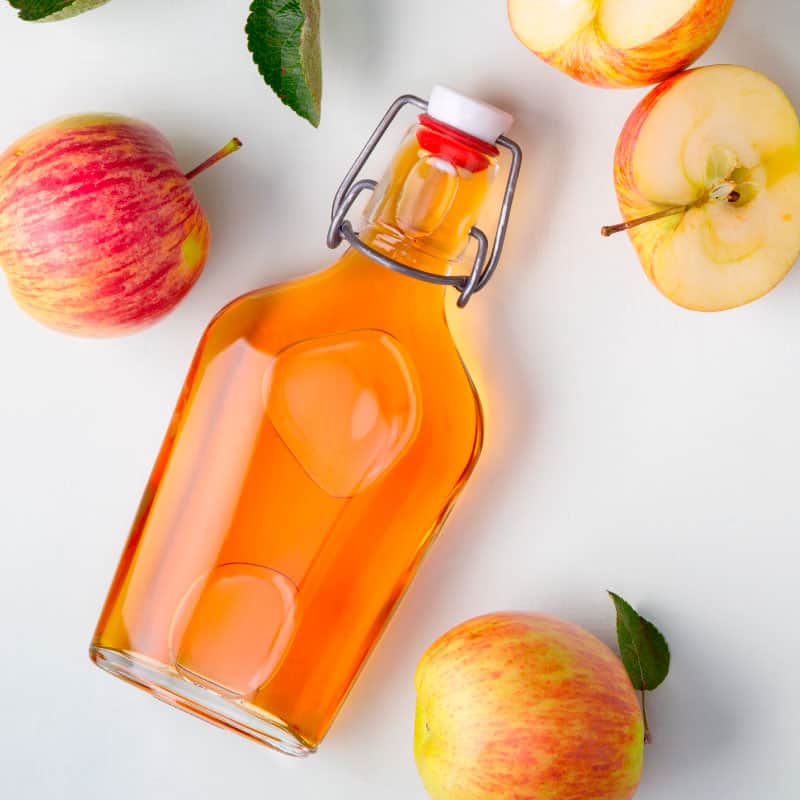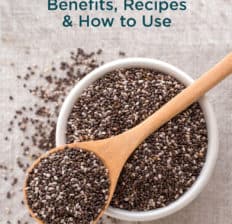This Dr. Axe content is medically reviewed or fact checked to ensure factually accurate information.
With strict editorial sourcing guidelines, we only link to academic research institutions, reputable media sites and, when research is available, medically peer-reviewed studies. Note that the numbers in parentheses (1, 2, etc.) are clickable links to these studies.
The information in our articles is NOT intended to replace a one-on-one relationship with a qualified health care professional and is not intended as medical advice.
This article is based on scientific evidence, written by experts and fact checked by our trained editorial staff. Note that the numbers in parentheses (1, 2, etc.) are clickable links to medically peer-reviewed studies.
Our team includes licensed nutritionists and dietitians, certified health education specialists, as well as certified strength and conditioning specialists, personal trainers and corrective exercise specialists. Our team aims to be not only thorough with its research, but also objective and unbiased.
The information in our articles is NOT intended to replace a one-on-one relationship with a qualified health care professional and is not intended as medical advice.
Chia Seeds Benefits: The Omega-3, Protein-Packed Superfood
October 6, 2023
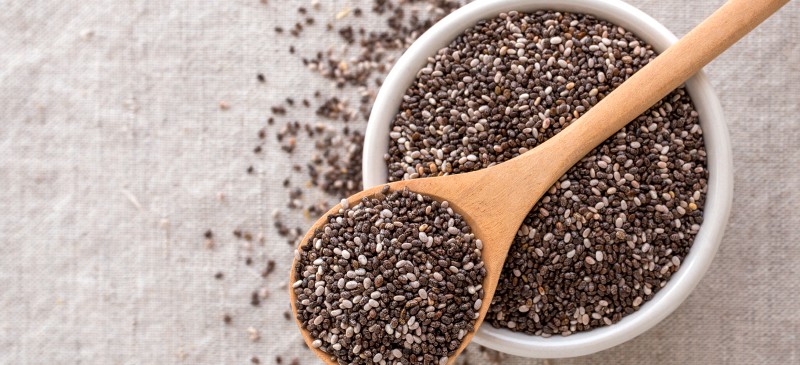
Chia seeds are frequently featured as the star ingredient in many healthy eating recipes, ranging from baked goods to protein bars to smoothies and beyond.
Why are chia seeds good for you? Apart from offering a pop of flavor and texture to your favorite foods, they also provide health perks, such as helping balance blood sugar and support heart health.
Keep reading for a complete list of chia seeds benefits and potential side effects, as well as preparation instructions and simple ways to add them to your diet with some clever chia seed recipes.
What Are Chia Seeds?
Chia seeds (Salvia hispanica) are tiny superfoods that are grow on a species of flowering plant that’s in the mint family. They are native to areas of Mexico and Guatemala but are commonly cultivated in many areas in North and South America.
Chia is typically easy t digest when prepared properly and can be a very versatile ingredient that works well in a variety of recipes. Plus, the seeds offer a long list of important nutrients, including:
- fiber
- protein
- manganese
- calcium
- antioxidants
- omega-3 fatty acids
Not only that, but recent research has found that the chia seeds benefits are even greater than scientists initially realized. They’ve been found to help promote healthy skin, reduce signs of aging, support the digestive system and build stronger bones.
Where Do Chia Seeds Come From?
Originally grown in Mexico, chia has long been highly valued for its medicinal properties and nutritional value. In fact, it was even used as currency at one point.
Chia means “strength” in the Mayan language, and chia seeds were known as “runners’ food” because runners and warriors would use them as fuel while running long distances or during battle. Aztec warriors ate them to give them energy and endurance, claiming that just one spoonful could sustain them for 24 hours.
Salvia hispanica has also been used for its potent healing properties in many branches of traditional medicine for centuries. According to Ayurveda, chia seeds can help nourish the blood and promote digestive regularity thanks to their ability to absorb water in the gastrointestinal tract, forming a gel-like substance.
They can also reduce inflammation, promote kidney health and support proper hydration.
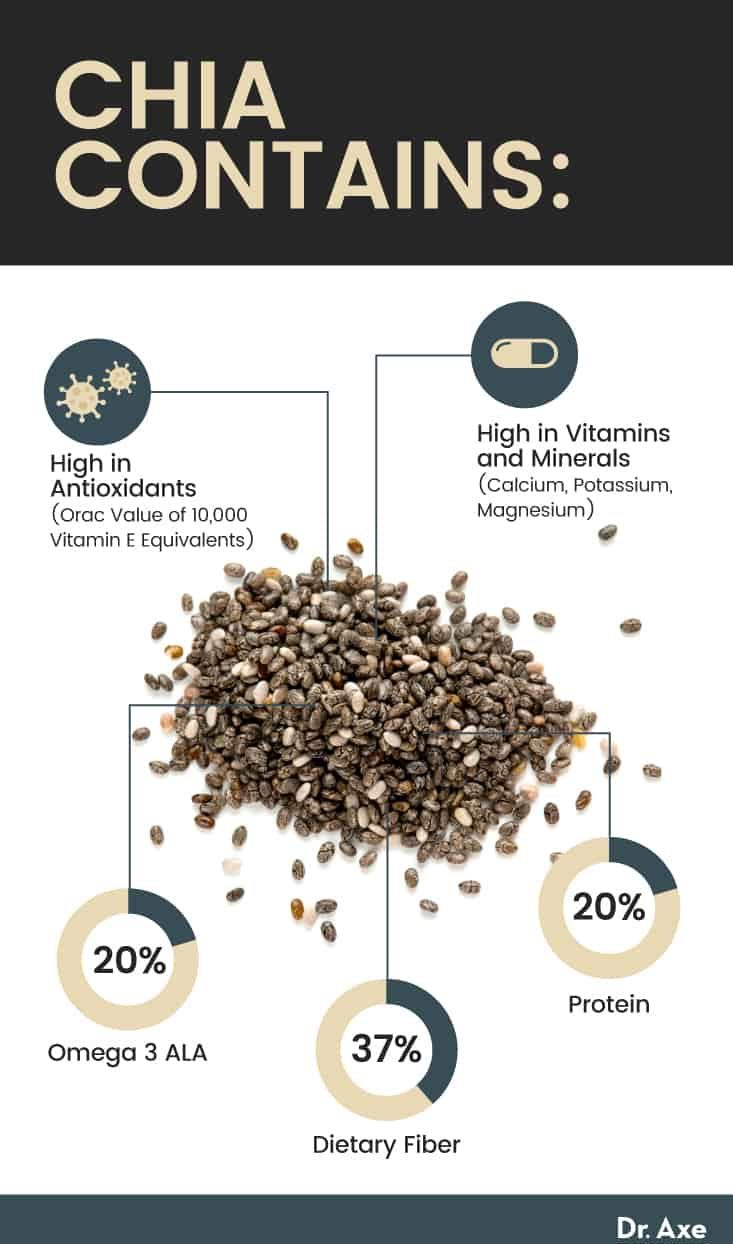
Chia vs. Flax vs. Hemp
Chia, flax seeds and hemp seeds are the three most popular varieties of seeds for their crunchy texture, mild flavor and nutritional benefits. All three are rich in fiber and protein and make valuable additions to many types of diets, especially vegan or vegetarian diets.
Ounce for ounce, chia contains the most grams of fiber and is especially rich in soluble fiber, which can help lower cholesterol levels, reduce appetite and promote digestive regularity. Unlike other types of seeds, chia can be consumed either whole or ground.
Plus, it provides a good amount of several other micronutrients, including calcium, manganese and phosphorus.
How about chia seeds vs. flax seeds?
Flax is the greatest plant source of omega-3s, which is important for reducing inflammation and preventing chronic disease. Flax is also high in lignans, which are plant compounds that acts as an antioxidant and have been linked to protection against cancer and heart disease.
Unlike chia, however, flax needs to be ground up before consumption in order to maximize absorption of its nutrients.
Compared to chia and flax, hemp seeds pack in the highest amount of plant-based protein per serving. They’re also rich in magnesium, zinc and iron.
However, they contain a much higher ratio of omega-6 to omega-3 fatty acids, a nutrient that most of us get too much in our diets already. Therefore, experts typically recommend consuming hemp in moderation.
Nutrition Facts
Chia is rich in protein (amino acids), fiber, manganese, phosphorus and calcium. Plus, as mentioned above, it’s a good source of omega-3s (polyunsaturated fatty acids), such as α-linolenic and linoleic acids.
Additionally, it’s rich in polyphenols and antioxidants, such as caffeic acid, rosmarinic acid, myricetin, quercetin and others. It’s also considered a low-carb food because the net carbs (total carbohydrate grams minus fiber grams) are relatively low.
A one-ounce serving of dried chia seeds (about 28.4 grams) contains approximately:
- Calories: 137
- Total Carbohydrates: 11.9 g
- Fiber: 9.8 g
- Total Fat: 8.7 g
- Saturated Fat: 0.9 g
- Polyunsaturated Fat: 6.7 g
- Monounsaturated Fat: 0.7 g
- Trans Fat: 0.04 g
- Protein: 4.7 g
- Sodium: 4.5 mg (0.2% DV)
- Manganese: 0.8 mg (35% DV)
- Copper: 0.3 mg (33% DV)
- Phosphorus: 244 mg (20% DV)
- Calcium: 179 mg (14% DV)
- Zinc: 1.3 mg (12% DV)
- Potassium: 115 mg (2% DV)
*Daily Value: Percentages are based on a diet of 2,000 calories a day.
In addition to the nutrients listed above, chia contains some vitamin A, vitamin B, vitamin E and vitamin D, plus minerals such as iron, iodine, magnesium, copper, niacin and thiamine.
Benefits
What are the benefits of eating chia seeds? Here are nine reasons to add more of them to your diet, including because they can decrease risk for several common diseases:
1. Support Healthy Skin
Chia is jam-packed with antioxidants, which are compounds that fight free radical damage and prevent oxidative stress while also promoting tissue repair and protecting against skin damage.
Interestingly enough, researchers from Mexico recently uncovered that they have a total antioxidant concentration nearly two times higher than previously reported. In fact, the antioxidant activity of Salvia hispanica seeds was shown to stop up to 70 percent of free radical activity.
As one of the most high-antioxidant foods on the planet, adding some to your diet may help fight premature aging and protect the skin cells from things like ultraviolet and environmental damage.
2. Promote Digestive Health
Chia is loaded with fiber, squeezing nearly 11 grams of fiber into a single ounce. This means that adding just one ounce to your daily meals my can supply a whopping 44 percent of your fiber needs for the entire day.
Because of their rich fiber content, chia seeds benefit digestive health by promoting regularity and increasing stool frequency to prevent constipation. The fiber also acts as a prebiotic to provide fuel for the beneficial bacteria in the gut, which plays a central role in many aspects of health and disease.
Fiber also absorbs a good amount of water and expands in the stomach, helping keep you feeling fuller for longer.
3. Improve Heart Health
Thanks to their high content of antioxidants, fiber and heart-healthy fats, chia seeds have been shown to help prevent cardiovascular disease in several ways.
One of the most powerful effects is it ability to reduce inflammation and decrease several risk factors of heart disease, such as high cholesterol and blood pressure. Inflammation can put extra strain on blood vessels and is thought to contribute to heart disease along with a slew of other chronic conditions.
Chia is high in omega-3 fatty acids, boasting even more omega-3s per gram than salmon. Omega-3s work to protect the heart by lowering blood pressure, cholesterol levels and inflammation. Meanwhile, the fiber found in chia seeds can help manage cholesterol levels and keep the arteries clear to minimize the risk of coronary heart disease.
A 2021 study also found that chia can help reduce high blood pressure/hypertension. In this study, adults with hypertension experienced significantly reduced blood pressure levels compared to a control group when they consumed 40 grams per day of chia seeds (about 1.5 ounces) for 12 weeks.
4. Balance Blood Sugar
Rich in both alpha-linolenic acid and fiber, evidence from several studies suggests that chia can help maintain normal blood sugar levels and fight development of type 2 diabetes and insulin resistance.
Animal and human studies have found that adding them to a high-sugar diet helps prevent changes in blood sugar and lipid levels. What’s more, human studies have also found that adding these seeds to white bread reduces the glycemic response and can help prevent spikes and crashes in blood sugar levels.
5. Boost Energy and Exercise Performance
Chia is often used by athletes for carb loading, a strategy that helps maximize the storage of glycogen in the muscles and liver to optimize endurance and boost exercise performance.
In fact, a study published in the Journal of Strength and Conditioning concluded that consuming chia seeds enhanced exercise performance for workouts that lasted 90 minutes the same way a sugar-laden sports drink would but without all the unhealthy sugar. In the study, half of the athletes drank 100 percent Gatorade, while the others consumed half Gatorade and half chia drink.
In the end, the runners’ times were matched, but the chia group consumed far less sugar.
Plus, studies show the protein content of these seeds is among the highest of all seeds and grains, giving it the ability to help build muscle mass and increase strength. Research shows that consuming protein as a post-workout meal can aid in the repair of muscle tissues and can also build new muscle to speed up recovery time between workouts.
6. Build Stronger Bones
Chia can help strengthen bone health and preserve bone density while reducing the risk of serious conditions like osteoporosis. This is because the seeds are loaded with calcium and manganese, two minerals that are needed to maintain bone health.
With about 99 percent of the calcium in your body stored in your bones, calcium serves an important role in maintaining bone strength and density. Manganese is also involved in bone metabolism, with studies showing that a deficiency in this key nutrient can impair bone resorption and decrease bone formation.
Impressively enough, a single ounce of chia seeds contains 18 percent of the calcium you need in a day while also meeting 30 percent of your daily manganese requirements.
7. Aid in Weight Loss
Chia seeds rank among the top plant-based protein foods, which is why they are great to consume for those trying to put on lean muscle, burn fat, and manage hunger and appetite.
How can chia seeds help you lose weight? Studies show that increasing your intake of protein can help promote weight loss by curbing cravings and cutting caloric intake.
One study published in the American Journal of Clinical Nutrition, for example, showed that increasing protein intake by just 15 percent of daily calories led to significant decreases in energy intake and appetite. Other research shows that chia may help reduce levels of ghrelin, the hormone responsible for stimulating hunger.
8. Fight Cancer Growth
Chia is rich in alpha-linolenic acid (ALA), a type of omega-3 fatty acid that gives it the potential to act as a cancer-fighting food.
One in-vitro study published in the Journal of Molecular Biochemistry found that ALA helped limit the growth of both breast and cervical cancer cells. Researchers also found that it caused cell death of the cancer cells without harming the normal healthy cells in the body.
While more research still needs to be done to find out the deeper implications of ALA on other types of cancer, this is a great discovery for women struggling with these increasingly common types of cancer.
9. Enhance Oral Health
Because chia is full of calcium, phosphorus, vitamin A and zinc, it helps promote dental and oral health.
Calcium is the building block of your teeth and necessary for maintaining oral health. Meanwhile, zinc prevents tartar by keeping plaque from mineralizing onto your teeth and has an antibacterial effect that keeps bad breath germs away.
Vitamin A and phosphorus are also important for strong teeth and a healthy mouth.
Related: 6 Benefits of Chia Seed During Pregnancy
How to Use
How many chia seeds should you eat a day? Between one and three tablespoons per day is a typical amount that’s recommended. Be sure to consume them with lots of water, which helps fiber do its job.
Where to Find:
Dried chia seeds can be found in the health food section of most grocery stores or ordered in bulk quantities online. There are various types available, including:
- black
- white
- milled
- pre-hydrated chia
Dried is the most popular option.
Chia seed oil is also available and can be applied topically to supply your skin with a good amount of hydrating essential fatty acids.
Regardless of what type you decide to buy, opt for organic seeds whenever possible, and check the expiration date to ensure they haven’t gone bad.
How to Grow:
You can try growing chia at home in either an indoor or outdoor garden. Sprinkle the dried chia seeds over soil, and be sure to provide enough space for your plants, as they tend to grow tall, with some reaching up to six feet.
Water them daily, and start harvesting once most of the petals have fallen off the flowers of the plants. Then pick the flower heads, and place them in paper bags to allow them to dry.
Once dried, the seeds should separate from the plant rather easily and can then be collected and used in your favorite dishes.
Wondering how to eat chia seeds? You can consume them raw, soaked, whole or ground, and they can be added to a wide array of recipes.
Recipes:
Chia is a great addition to a variety of recipes, including simple cereals, low-carb bread recipes and classic chia seed pudding. Try the seeds in these healthy recipes:
- Strawberry Rhubarb Chia Seed Pudding Recipe
- Grain-Free Oatmeal Recipe
- Coconut Yogurt Chia Seed Smoothie Bowl
- Keto Smoothie Recipe with Avocado, Chia Seeds & Cacao
Risks and Side Effects
There are very few side effects associated with chia seeds when they’re eaten in moderation.
Occasionally, some people may experience stomach discomfort when consuming high amounts, mostly due to the high fiber content. As with any food, increase your intake slowly, and drink plenty of water.
If you have any concerns or experience any persistent side effects, consider decreasing your intake, and be sure to discuss with your doctor.
Can chia seeds make you gain weight? They shouldn’t, as long as you don’t eat too many. Stick to about two to three tablespoons daily.
Conclusion
- The chia seed is a type of seed that comes from a flowering species in the mint family of plants and is native to Mexico and Guatemala.
- The chia nutrition profile boasts a good amount of protein, fiber, omega-3 fatty acids, and important minerals like manganese, calcium and phosphorus — thus explaining why chia seeds benefits are so plentiful.
- So what are chia seeds good for? Chia seeds benefits include increased weight loss, better blood sugar levels, improved heart health, enhanced regularity, increased weight loss and more.
- From chia seed pudding to protein bars and baked goods, there are plenty of chia seeds recipe options that you can try to fit this nutrient-rich seed into your diet and get chia seeds benefits.
- Soak, grind or enjoy whole for a nutritious and delicious way to boost the benefits of your diet and take advantage of the multitude of chia seeds benefits.


